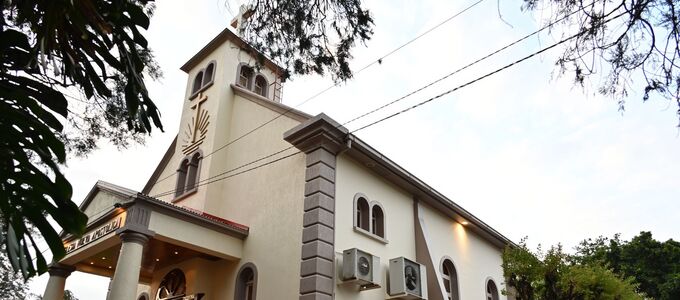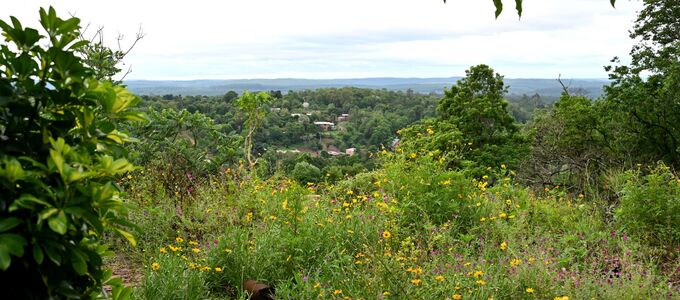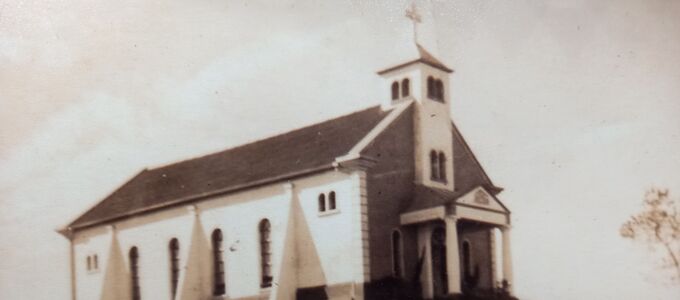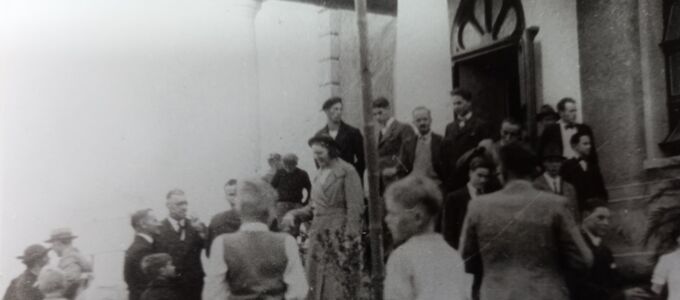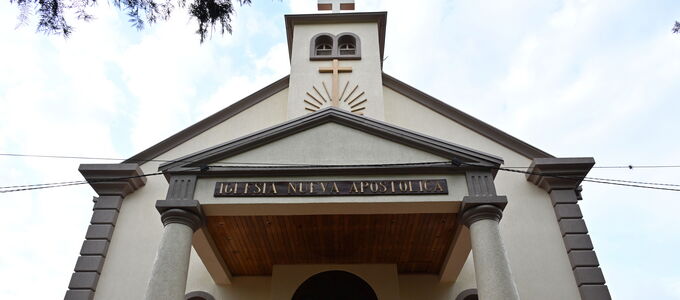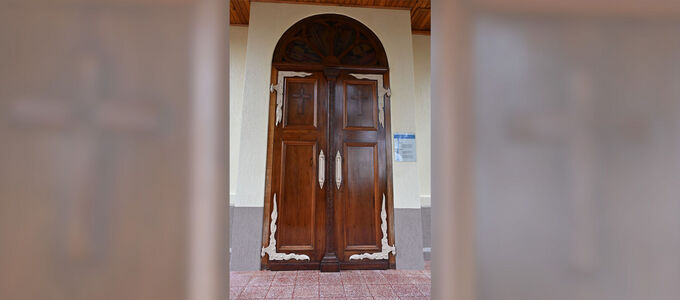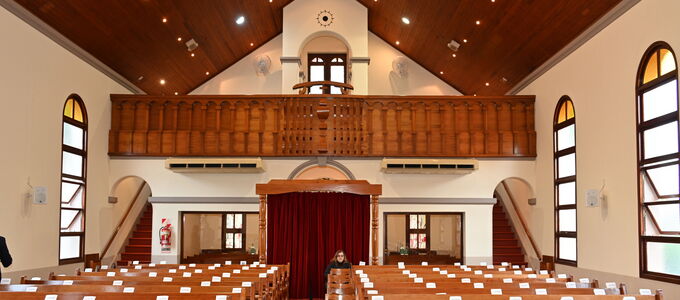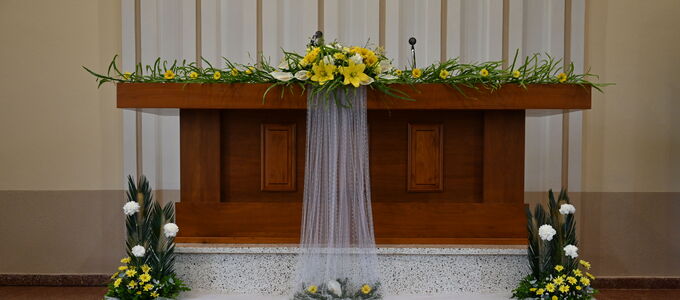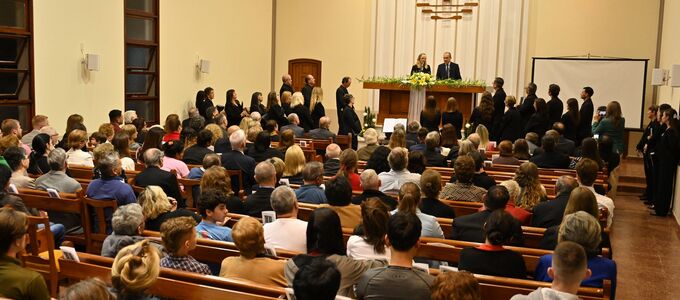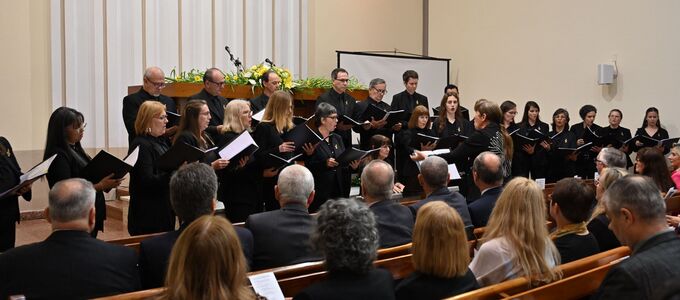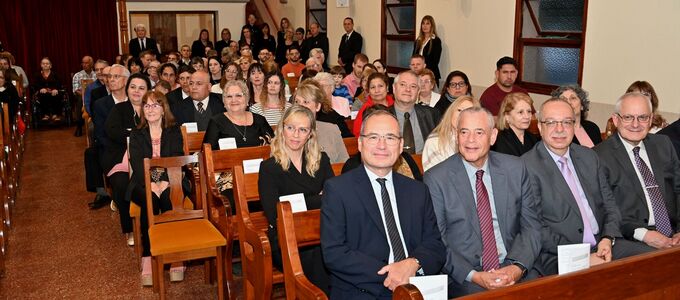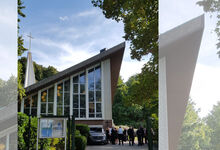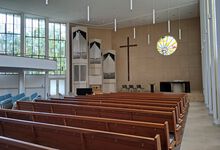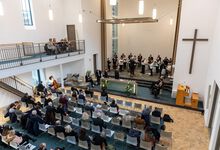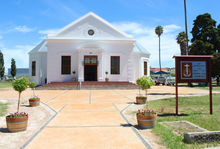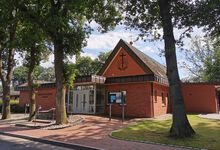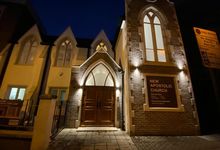High above the city—the centre of the congregation
You can’t help but notice it: Argentina’s Eldorado Km 9 church is located high above the city and features a unique mixture of various styles and time periods. Built by the members themselves, it has always been a mighty fortress through the years, and this year it celebrates its 85-year anniversary.
The name of the congregation is Eldorado Km 9. And its neighbour congregation is called Eldorado Km 28. The numbers indicate the respective distances from the Río Paraná, a large river that flows near the city.
The first thing that catches the visitor’s eye about Eldorado Km 9 is the bell tower emblazoned with the New Apostolic emblem. Two columns in the Greek style support the triangular canopy. The nave of the church can be reached by walking through a red velvet curtain. A large, heavy wooden door with white ornamentation leads to the altar area. The wooden altar is of the same dark colour. The ceiling, the railing of the balcony, and the benches are likewise made of wood.
European immigrants bring their faith
Immigrants from Europe settled in the area in around 1935 and brought with them a deeply rooted New Apostolic faith. And they were not shy to tell people about it.
For example, there was Priest Johann Vögeli from Switzerland, who celebrated the first divine services with his family in their home. He invited neighbours and acquaintances to the services and travelled up to 20 kilometres on horseback in order to make pastoral care visits.
Land destined for a special purpose
On 22 August 1936, Chief Apostle Helper Heinrich Franz Schlaphoff visited the emerging congregation. He dispensed the sacrament of Holy Sealing to 27 believers and ordained the first ministers. The divine services, which were still conducted in German at the time, were soon accompanied by a small choir.
Sub-deacon Adolfo Blaser donated the land for the construction of the church. He had purchased the real estate long before he had ever heard of the New Apostolic faith—on the condition that a church should be built there. So it was that he did not hesitate to make the piece of land available to the New Apostolic congregation.
The brothers and sisters built much of the church themselves in the late 1930s. There was no electricity in those days, so the members brought water up the mountain themselves using oxcarts. The hand-made benches crafted by the earliest members still stand in the nave today.
The dedication is postponed
In 1938 the foundation was dug and the cornerstone was laid. The believers placed a paper in a time capsule with the names of everyone involved in the construction, along with a Bible verse from Isaiah 28:16: “Therefore thus says the Lord God: ‘Behold, I lay in Zion a stone for a foundation, a tried stone, a precious cornerstone, a sure foundation; whoever believes will not act hastily. ‘”
By spring 1939, everything was ready. The church—constructed in something between the neo-Romantic and Classical styles—was ready to occupy. Invitations were printed in both Spanish and German, and distributed in the surroundings. Some of the members even drove cars through the streets of the city using loudspeakers to announce the dedication of the church building.
The dedication service was originally scheduled to take place on 28 May 1939. However, it was postponed for a few days because heavy rains had turned the roads into mud, making them quite impassable. So it was that Chief Apostle Helper Schlaphoff finally celebrated the dedication on 4 June 1939. Some local officials even attended the service as guests, and an instrumental ensemble provided the musical backdrop for the divine service.
“God has provided for His people”
Eldorado Km 9 continued to grow over the years. In 1978, over 700 members took part in a divine service with Chief Apostle Ernst Streckeisen. Ministers living near the border even provided pastoral care to the congregations in Paraguay and Southern Brazil.
Soon it became necessary to renovate the building. Not only was the back wall of the altar redesigned, but the lighting system was upgraded, new air conditioning was installed, and the church was made wheelchair accessible. Apostle Jorge Cabanelas celebrated the rededication of the church with the congregation on 1 October 2000.
Twenty-three years later, Chief Apostle Schneider visited the congregation. There he enjoyed a video created by the congregation’s members about the history of the congregation, as well as a concert featuring a children's choir, a mixed choir, and a number of soloists. When the congregation was dedicated in 1939, perhaps many wondered, “What will the future of the church be?” The answer was given by the Chief Apostle in his address to the congregation: “But the congregation grew and became stronger. God has provided for His people.”
Article info
Author:
Date:
Keywords:
Katrin Löwen
19.02.2024
church architecture,
churches,
buildings for divine services,
Argentina,
emblem NAC,
architecture,
historic,
altar,
church pew,
emblem,
cross,
Congregational life


